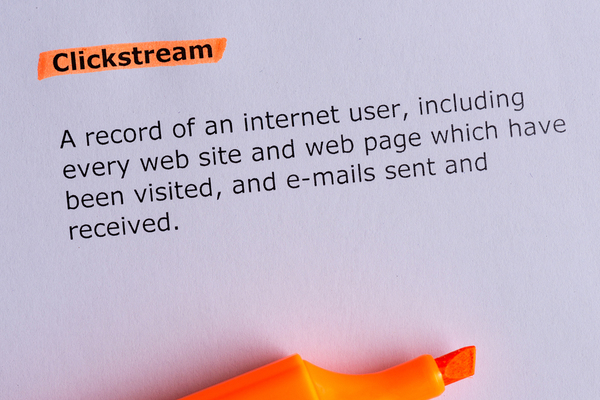How Clickstream Data Can Help You Understand Your Customers Better

Analytics is the window to the internet user’s soul, at least, the digital soul. You rely on it to manage, measure, and analyze your e-commerce marketing performance and the overall impact your brand has on consumers. But how in-depth is your analytics software? And how well do you use it? More importantly, how well do you know the diversity of analytics?
Chances are you use this software to track impressions, clicks, website traffic, and conversions, in a basic sense. This may simply look like keeping score of keywords, ad views, clicks on your web pages, newsletter sign-ups, and product purchases. In this case, your data typically takes the form of numbers tied to the historical or present internet activity of your target audience.
But understand this is only scratching the surface of analytics. This is especially so if you don’t have a clear vision, mission, and strategy established to understand how and why your brand is received as it is. If this is your situation, then allow clickstream data to assist you.
Clickstream data is considered a virtual trail that a user leaves behind while searching the web. This data is historical, encompassing every web page a user visited, the length of time for each visit, and the order of each visit. Newsgroup participation and email addresses are also recorded and implemented into clickstream data.
In other words, this information includes just about every aspect of a user’s actual click and browsing behavior on the internet. Clickstream information goes beyond the simple act of recording the number of impressions, clicks, sign-ups, and purchases gained to understand users. It reflects the needs, motives, and interests of consumer behavior to identify areas businesses need to improve for better e-commerce marketing results.
Furthermore, it provides the kind of facts that can help marketers cultivate deeper relationships with their target audience than basic analytics. You have a better chance of shaping your target audience in desirable ways that lead to greater purchases and customer loyalty. And there are some certain tips you should abide by to make this happen.

Clickstream data encourages marketers to not simply collect numbers but to draw real insights about the complexities of their target audience. It’s impossible to effectively do this without a hypothesis. A hypothesis is a proposed explanation about the state of your target audience and your business.
Look at your hypothesis as the basis for how you conduct your e-commerce marketing efforts. And this is based on limited information, so you’ll need to use your clickstream data to test it. But it encompasses what you think you know about the population you’re trying to serve along with the strengths and weaknesses of your business practices.
The more specific your hypothesis is, the more capable you are of pinpointing how to research, analyze, and supply adequately. Use your hypothesis to better define output goals that are realistic and measurable. For example, you may want to look into consumer participation in free e-courses you have developed. Instead of simply tracking the number of sign-ups you have received for these e-courses, track how they led to related consumer behavior.
Maybe these sign-ups led to an increase in certain product purchases from your website. Maybe you find out they led to users engaging in more research about related e-courses from competitors. Then you can learn how to optimize your e-courses to beat competitors you were once unaware of and reel in more product purchases. Overall, it’s less of a hassle to determine how different areas of your e-commerce marketing journey are interconnected.
Is the essence of clickstream data clear to you now? Hopefully, it is. Here at Elite SEM, we understand and value the importance of going beyond trackable numbers for a satisfying e-commerce marketing experience. We care about linking together the user’s pre-click motivation with their post-click intentions. To learn more about turning your searchers into purchasers, read our POV: Search-to-Store Attribution: Solving the Missing Link.
